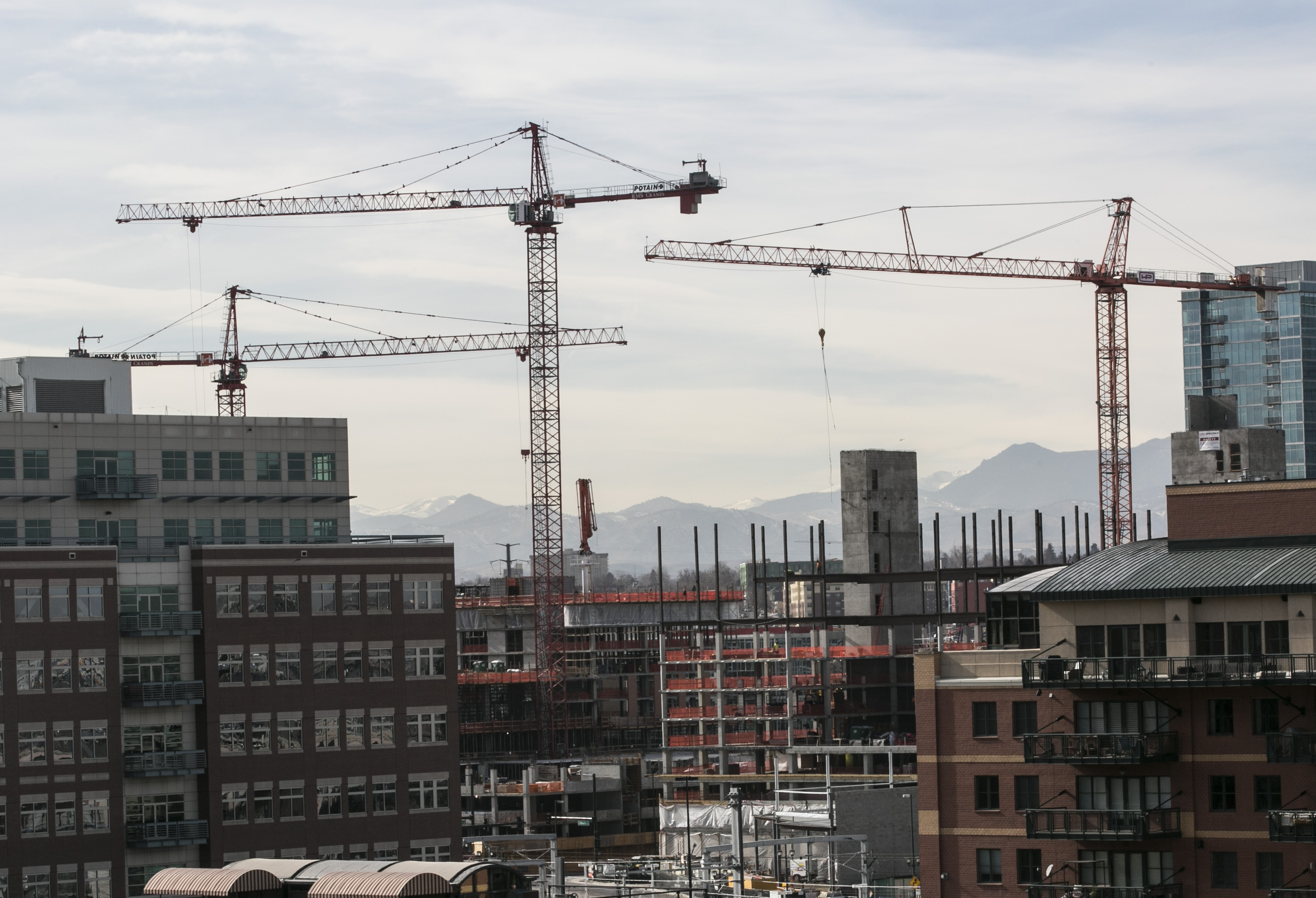
Is the construction boom in Denver making the city ugly? Some observers say many of the apartment complexes going up are unattractive and poorly constructed. They help meet the need for more housing, of course, but is Denver failing at design?
In an interview with Colorado Matters last year, longtime developer and preservationist Dana Crawford said: “Growth and change always brings difficulty. I think that … the cost of living has increased, and the thing that I regret that’s coming with it is an enormous amount of growth of building apartments, rental apartments, and I think so many of them are being constructed from plywood. I say we’re just building a plywood city that 15 years from now isn’t going to hold up.”
Crawford isn’t alone. The “Denver Fugly” Facebook page has nearly 3,000 followers. And last April, architect Jeff Sheppard, of the firm Roth Sheppard, wrote an op-ed in the Denver Post with the provocative headline: “Denver is a great city, so why the bad buildings?” He says thousands of e-mails flooded his inbox.
Sheppard and Matt Schildt, managing director of development for Trammell Crow Residential, spoke with Ryan Warner.
See images of some of Trammell Crow Residential’s projects here, here, and here.
Why Jeff Sheppard calls some new buildings "meaningless, uninspiring structures:"
Sheppard: "Well, I think if if you look at the buildings around Denver, many of the new ones, and you travel across the U.S., you'll see similar buildings and in other cities and states. And using the term meaningless and uninspiring really gets to the fact that many of these buildings look like they could be anywhere, that they don't look like they're respecting the context of Denver, the environment, the conditions that we have here in terms of the amount of sunlight. So they really end up, basically looking like they don't belong in Denver."
Whether Denver is turning into a 'plywood city that won't hold up:"
Schildt: "Wood frame construction is a cost effective way to produce a five, and now, up to a seven-story building. ... But the stick itself has very little to do with what the exterior of the building and the skin looks like. You can have a concrete building that would be a hundred percent lap siding on the exterior while you could have a stick building that would be a hundred percent brick. So the stick itself, although you know people like to beat up on it ... that really has little to do with design."
Whether building more beautiful buildings is more expensive:
Schildt: "I don't think that they have to be. I mean I can think of examples around town of buildings that I view as unsuccessful or that haven't aged well over time that have very expensive exterior materials. ...
"Some of the first residential that came in downtown came in at a point in time where corrugated steel as popular as an exterior treatment. Corrugated steel is not an inexpensive way to skin a building. So you can spend a lot of money, but it doesn't necessarily mean that you're going to come to an outcome that is going to be good over the long run. I think that, you know, it really comes to the design of the building, how the material transitions are treated, color is a huge issue that often doesn't get I think enough attention and can hugely influence the outcome in a building.
"So I think that you can take building materials that are economical and reasonable and use them in a way that's thoughtful. ... People will stand in front of it and everyone may not say it's a great building, but people will probably won't have consensus that it's a bad one."
On design review, a process that could lead to more consensus:
Sheppard: "Design review is the idea that the neighborhood can actually form--or a city--can actually form different districts or areas where they have design review for each of these districts or neighborhoods. ...
"What happens is they might say that each design review committee should have a certain percentage of people from the neighborhood on that design review committee, an architect, maybe a developer, and maybe a lawyer even. But they'll they'll stipulate that the design review committee should be made up of a diverse group.
"That way you don't just get architects controlling it or a couple neighbors controlling what happens with the design there."
How developers feel about design review:
Schildt: "We welcome it and again I think that it can lead to better outcomes. ...
"It can lead to more expense. Less because of more expensive materials, I would say it adds time. Time adds both expense and uncertainty, so ... uncertainty and time are two things that are are dangerous to us in the development world. ...
"There are a handful of developers there probably wouldn't do it because they would be afraid of the process or you know afraid of the costs that it could impose."







